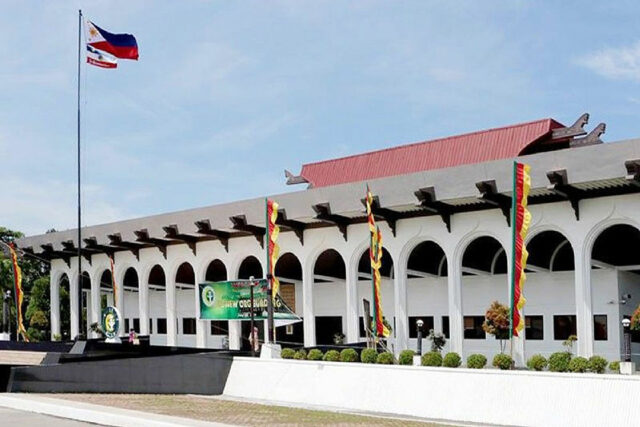DEARBORN, Michigan — US President Joseph R. Biden easily won the Democratic presidential primary in Michigan on Tuesday, but a protest vote by Democrats angry over his support for Israel’s war against Hamas in Gaza exceeded organizers’ expectations.
Donald Trump won the state’s Republican presidential primary by a large margin, strengthening his grip on the party’s White House nomination as Nikki Haley, his last remaining rival, came in a distant second.
Although Mr. Biden and Republican former President Trump had been expected to easily win their separate party primaries, the vote count for both was being closely watched for signs of wavering support.
In Michigan, home to a large Arab American constituency, Democratic voters had been urged to mark their primary ballots as “uncommitted” on Tuesday in protest at Mr. Biden’s Gaza policy.
With almost half of Democratic votes counted, the number of “uncommitted” voters was more than 58,000, according to Edison Research, far exceeding the target of 10,000 that protest organizers had hoped for.
Many in Michigan’s Arab American community who backed Mr. Biden in 2020 are angry, as are some progressive Democrats, over Mr. Biden’s support for Israel’s offensive in Hamas-ruled Gaza where tens of thousands of Palestinians have been killed. “Our movement emerged victorious tonight and massively surpassed our expectations. Tens of thousands of Michigan Democrats, many of whom who voted for Mr. Biden in 2020, are uncommitted to his re-election due to the war in Gaza,” the Listen to Michigan campaign, which urged people to vote uncommitted, said in a statement.
Campaign organizers vowed to take what they called their antiwar agenda to the Democratic National Convention in Chicago in August. Michigan pollster Bernie Porn said it remained to be seen how big of an issue the Middle East would be for Mr. Biden in November when the situation could look different.
In a statement late on Tuesday, Mr. Biden said, “I want to thank every Michigander who made their voice heard today. Exercising the right to vote and participating in our democracy is what makes America great,” he said.
The statement made no mention of Gaza or the “uncommitted” vote.
“Donald Trump is threatening to drag us even further into the past as he pursues revenge and retribution,” Mr. Biden said.
Partial returns showed Mr. Biden and Mr. Trump with solid overall leads. With nearly half the estimated Democratic vote counted, Mr. Biden had 80% support, with “uncommitted” getting 13%. With 58% of the estimated Republican vote counted, Mr. Trump had 67% support to Ms. Haley’s 27%, Edison Research said.
Michigan routinely offers an “uncommitted” option as a way of questioning whether a named candidate has the support of the party’s base. It could not be determined how many of those votes were protesting Biden’s Gaza policy.
When former Democratic President Barack Obama ran for re-election in 2012, he faced about 21,000 “uncommitted” voters in Michigan’s primary that year. Mr. Biden faced substantially more.
Michigan is expected to play a decisive role in the head-to-head Nov. 5 US presidential election, a likely rematch between Mr. Biden and Mr. Trump.
It is a battleground state that could swing toward either party. Mr. Biden beat Mr. Trump in Michigan by just 2.8 percentage points in the 2020 election.
“We have to win on Nov. 5, and we’re going to win big, and it’s going to be like nothing that anybody has ever seen. It’s going to be fantastic. We win Michigan, we win the whole thing,” Mr. Trump told supporters in Michigan by phone.
NIKKI HALEY TO CARRY ON
Michigan turnout for former UN Ambassador Haley, who won nearly 40% of Republican votes in her home state of South Carolina on Saturday, was also being scrutinized for signs of vulnerability for Trump among moderates, whose support he would need in a general election.
Despite having lost to Trump in every primary race, Haley has performed well with moderate voters, although she has no clear path to the nomination.
On Tuesday, shortly before Trump was projected the winner in Michigan, Haley vowed to carry on.
“We’ve only seen a handful of states vote,” Haley told CNN. “We’re taking this one state one day at a time.”
Late on Monday, Mr. Biden said Israel had agreed to halt military activities in Gaza for the Muslim holy month of Ramadan expected to begin on the evening of March 10, as Hamas studied a draft for a truce that includes a prisoner-hostage exchange.
It should have happened sooner, said Michael Bristol, 21, a student at Wayne State University who said he cast an uncommitted vote.
Engage Action and Listen to Michigan said before the vote they were aiming for 10% of Michigan’s Democratic primary voters to mark their ballots uncommitted, a symbolically significant 10,000 votes — about equal to Democrat Hillary Clinton’s loss in Michigan to Trump in the 2016 presidential election.
Democrats, overall, support Biden’s handling of the Israel-Hamas conflict by 61%, February polling by Harvard-Harris shows.
Michigan Governor Gretchen Whitmer and other Democrats have warned that if Democratic voters abandon Biden, they could hand the swing state and the country back to Trump in November. Biden defeated Trump in the 2020 election.
On Feb. 1, Biden won a strong pledge of support from union autoworkers, a Michigan voting bloc no less crucial to his reelection bid. The state is home to nearly 20% of all US auto production, more than any state in the country.
Michigan’s Republican Party, beset by internal turmoil, will allocate some delegates to the party’s July convention based on Tuesday’s primary results.
Rival factions are holding dueling party meetings on Saturday that will award the bulk of the delegates. It was unclear, however, which results will be official, although Mr. Trump was expected to handily win both sets of Saturday’s votes. — Reuters














